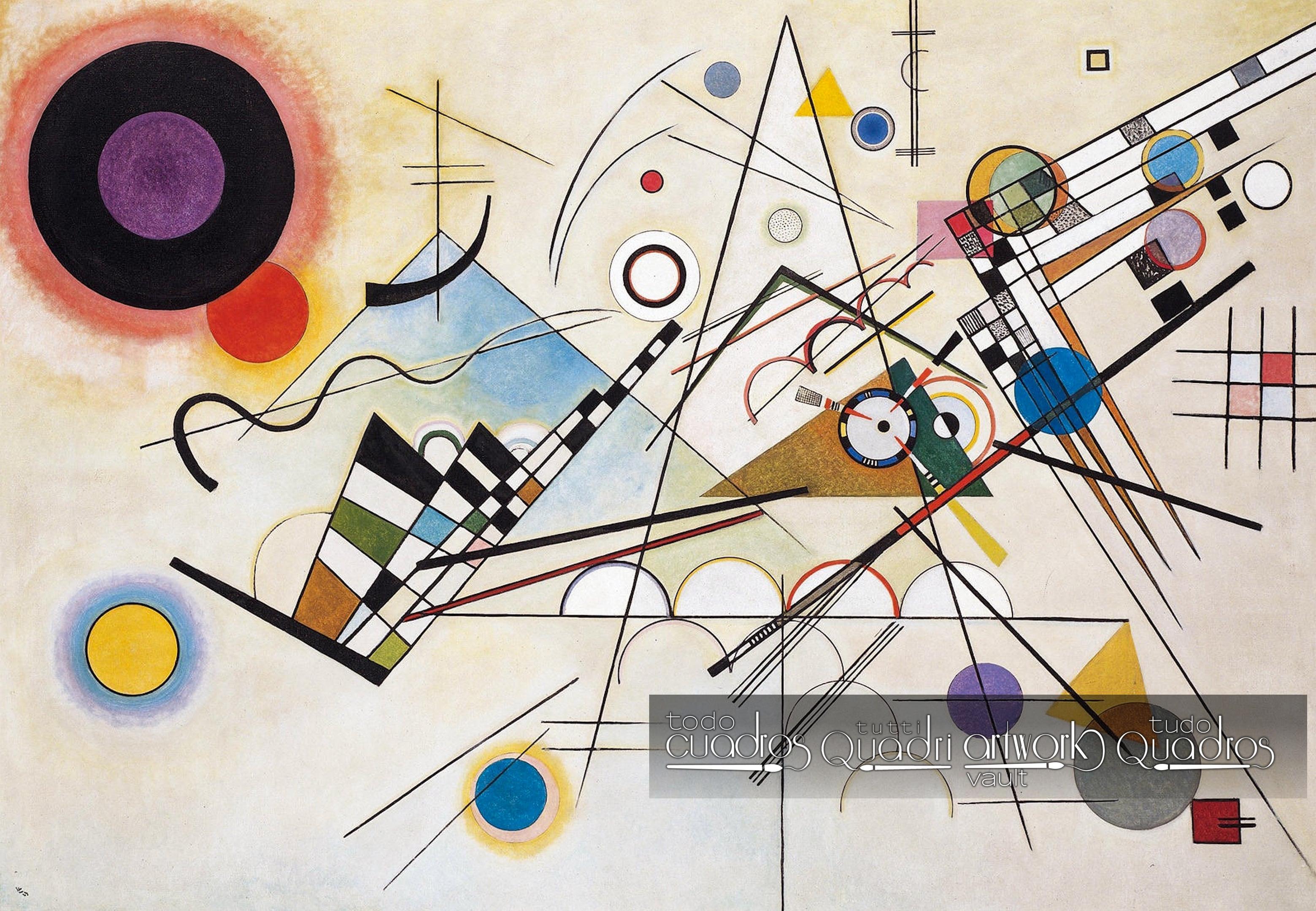
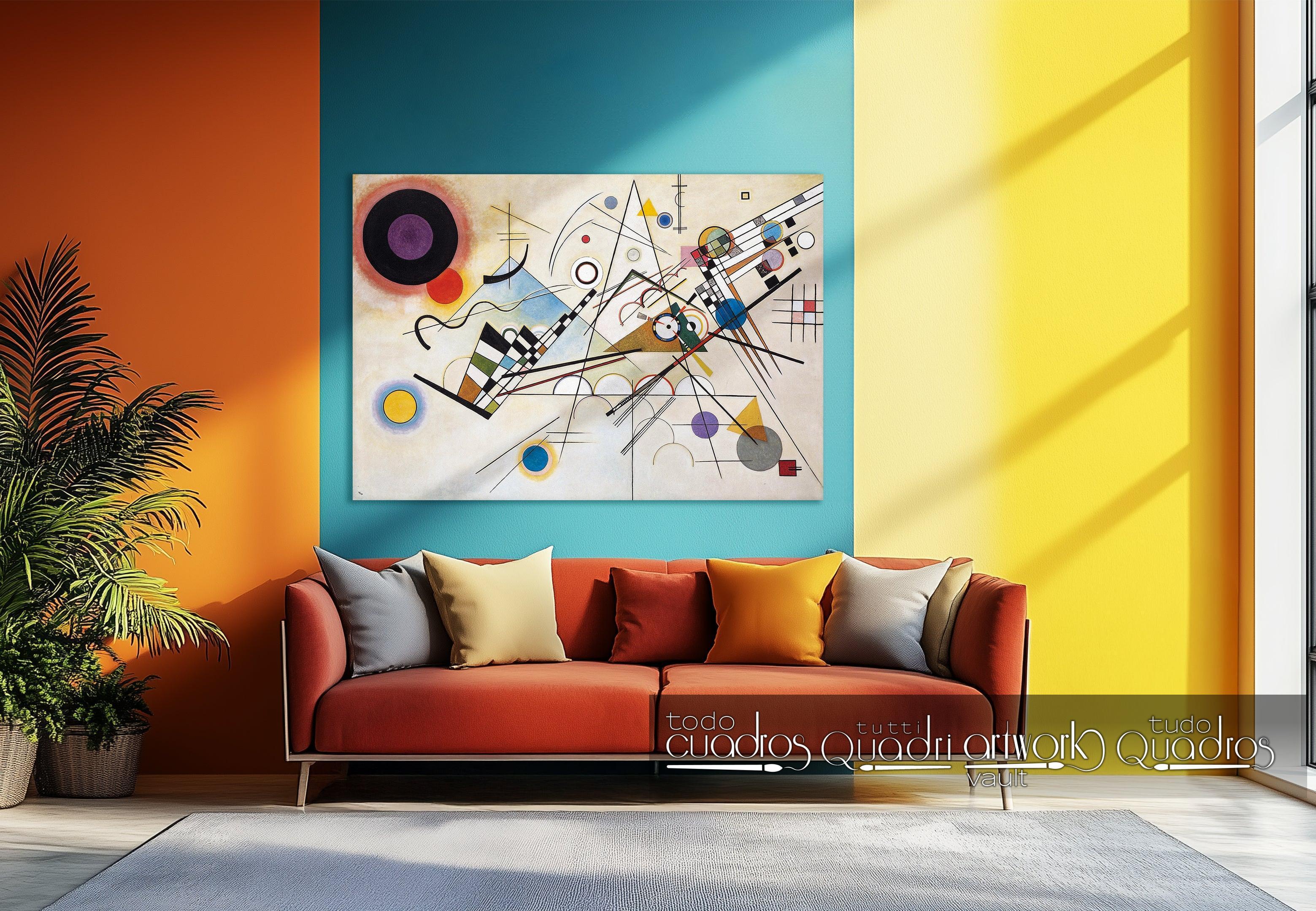
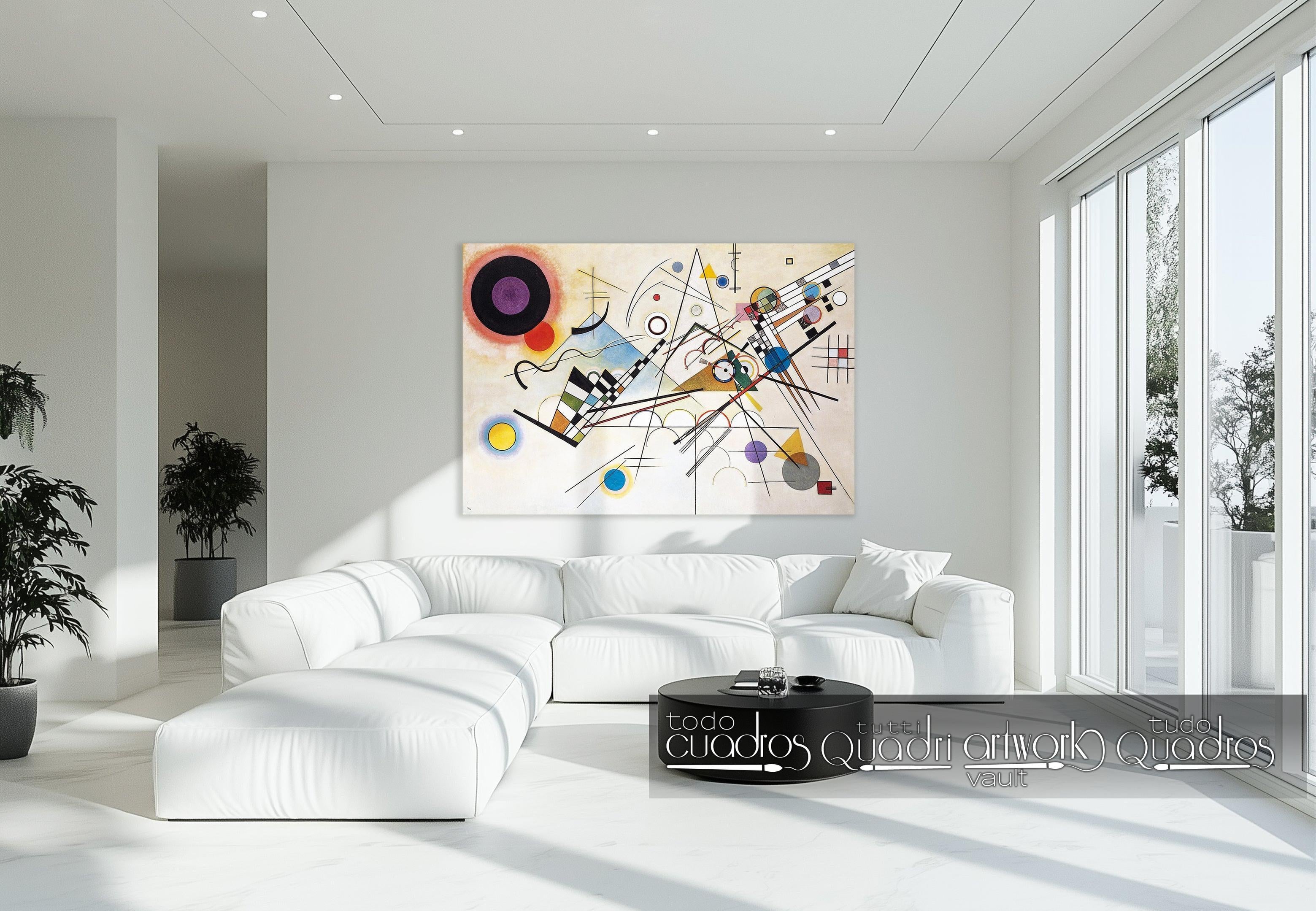
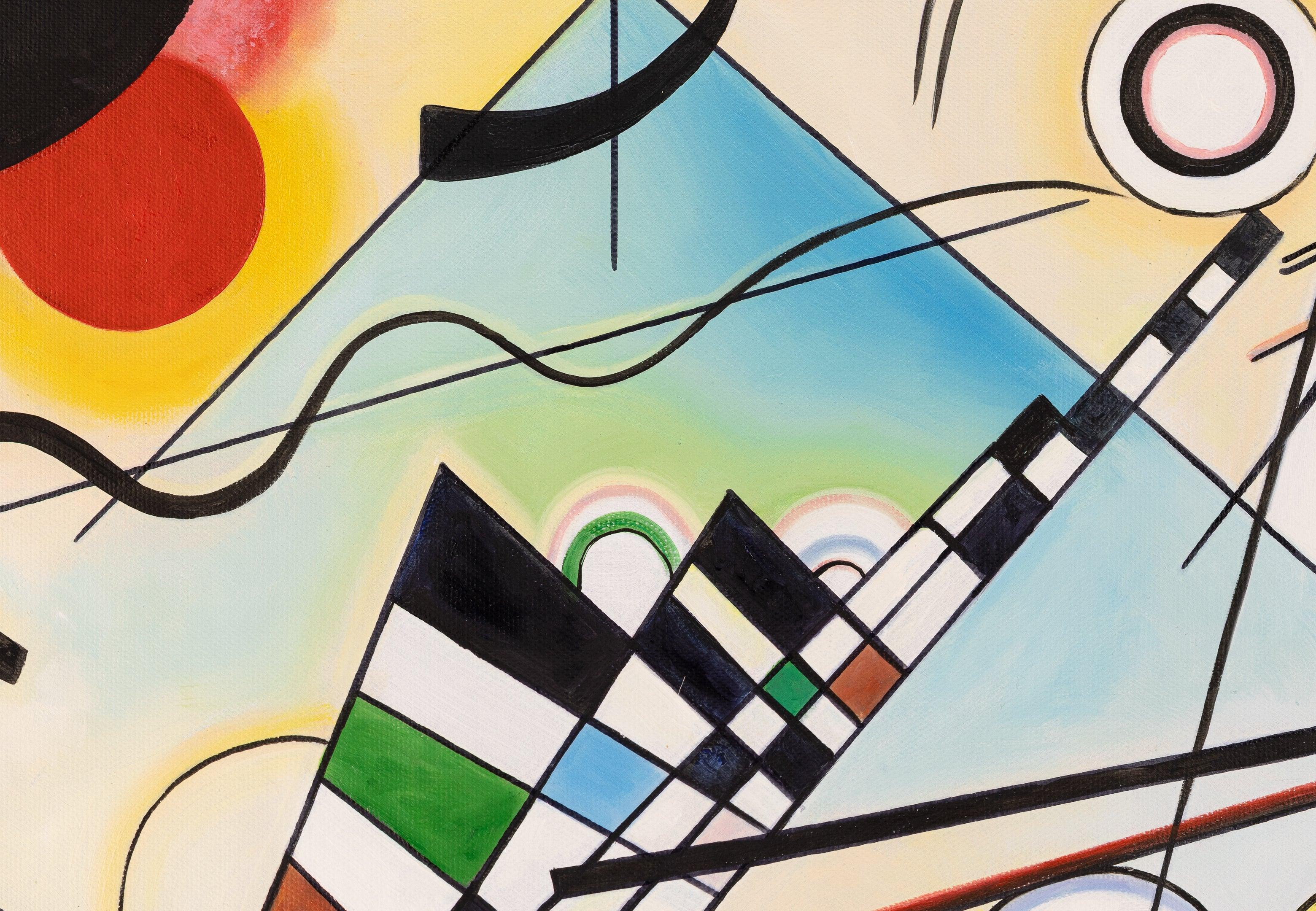
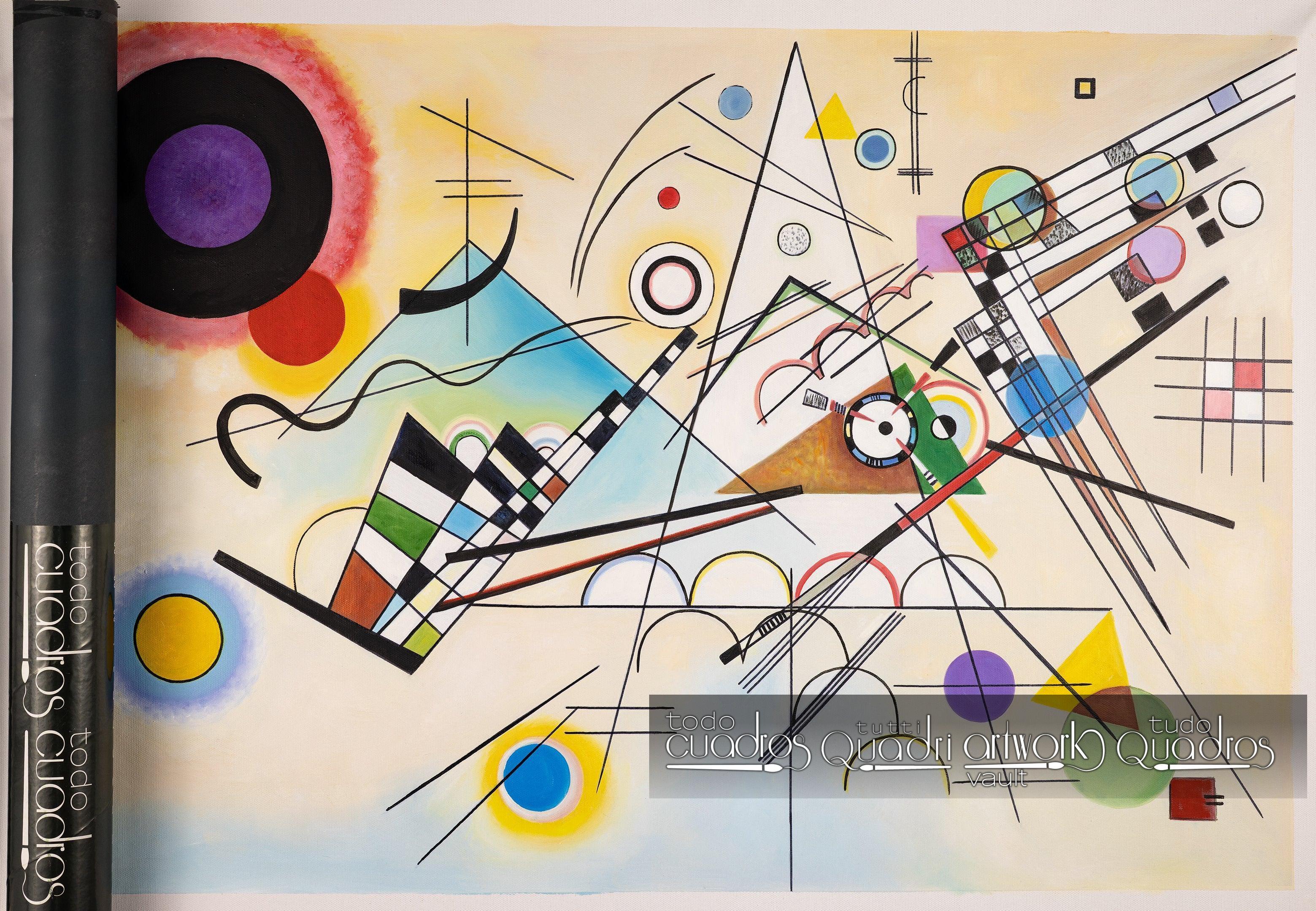
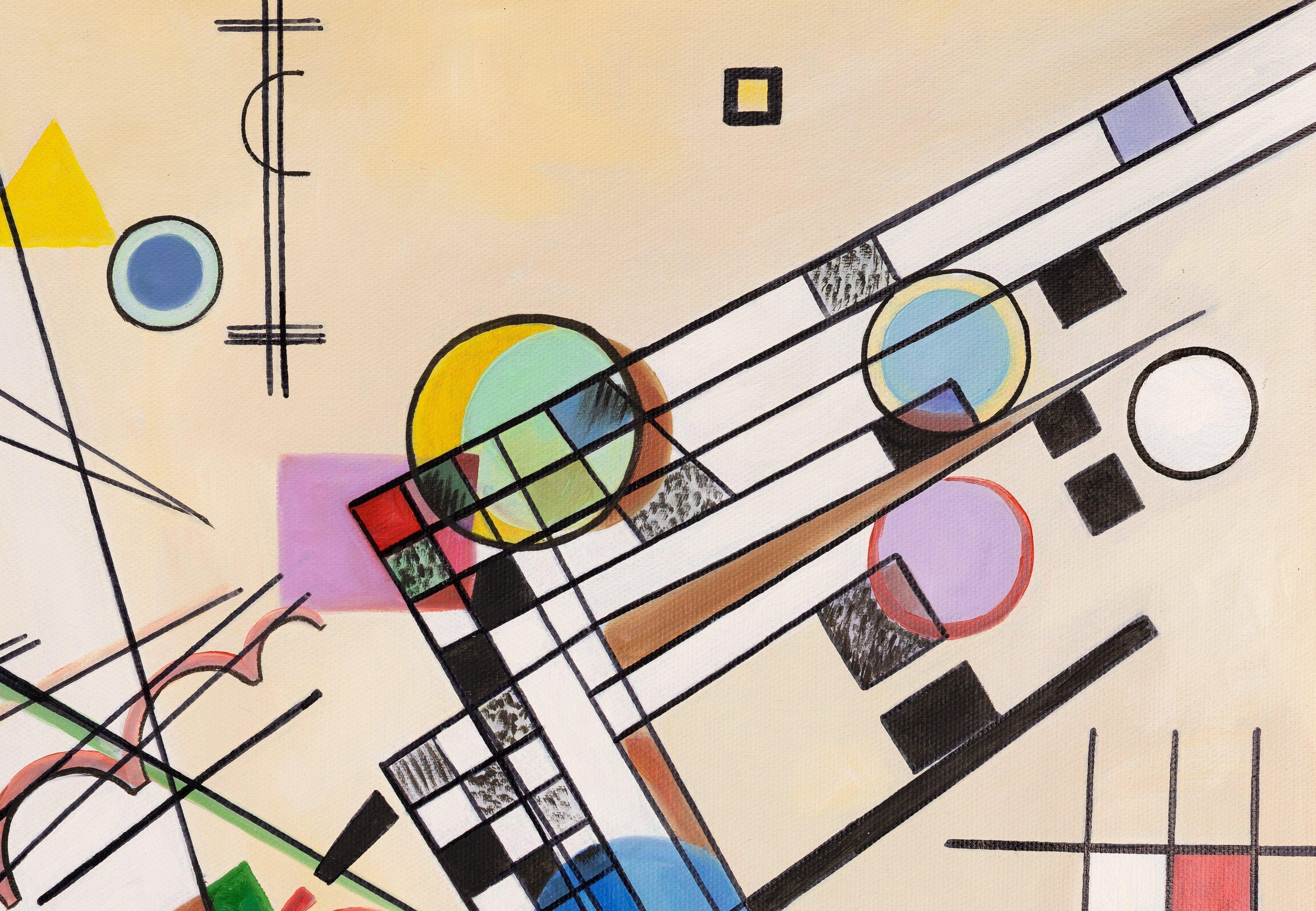
Composition VIII, Kandinsky
- Oil on linen canvas
- 100% hand-painted
- Reproduction painting
- Available to purchase online
- See quality
- Delivery to the UK
- Money-back guarantee
- Customer reviews
| Author: | Wassily Kandinsky |
|---|---|
| Type: | Painting |
| Style: | Lyrical Abstraction |
| Medium | Oil |
| Support: | Canvas |
| Year: | 1923 |
| Located: | Solomon R. Guggenheim Museum, New York |
The work belongs to the permanent collection of the Solomon R. Guggenheim Museum in New York, an institution that holds one of the most comprehensive representations of 20th-century abstract art. In "Composition VIII," Kandinsky moves away from the organic textures and spontaneous forms of his expressionist period to explore a visual universe governed by rational order and compositional rhythm. Triangles, circles, lines, and color planes balance in a visual dialogue that translates into image the principles of symphonic music and the color theory developed by the artist.
The painting was executed in oil on canvas and measures 140 × 201 cm. Each geometric element fulfills a precise structural function: circles symbolize spiritual harmony, lines generate movement and tension, and the asymmetric arrangement reinforces the sense of dynamic balance. Kandinsky conceived the composition as a visual score, where each form acts as a note within a chromatic orchestra.
From a technical perspective, the work demonstrates the artist’s mastery of the theory of simultaneous contrast and the distribution of visual masses. Kandinsky applies principles of constructive geometry and axial balance to organize the pictorial space, maintaining strict control over rhythm and proportion. The use of primary, secondary, and neutral colors is not based on arbitrary aesthetic choices but on a structural intention: to create harmonic tensions that stimulate the viewer’s emotional perception.
"Composition VIII" is one of the most representative works by Wassily Kandinsky, created in 1923 during his period at the Bauhaus. This painting marks a turning point in his career, where the artist consolidated his abstract language based on geometric precision, mathematical harmony, and the dynamic interaction between shapes and colors.
Choose options








